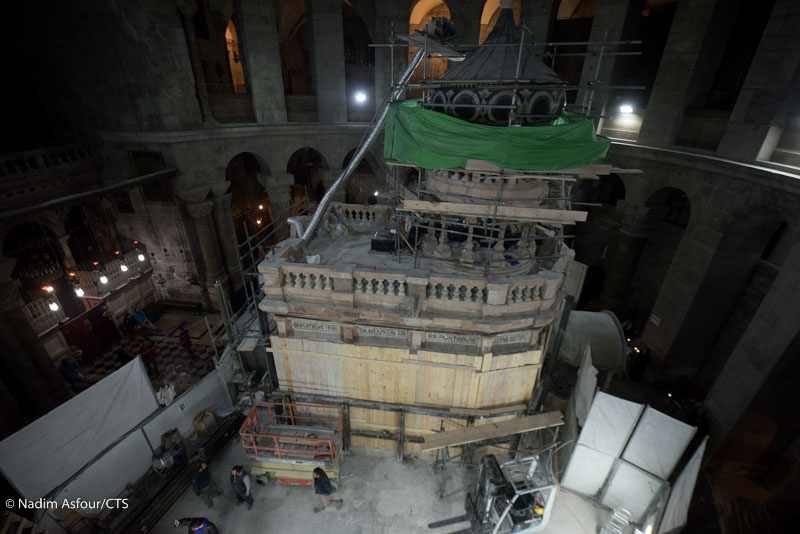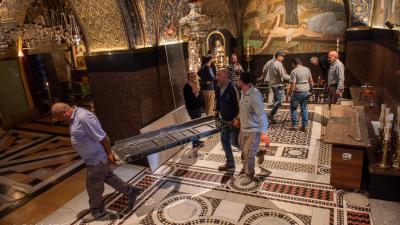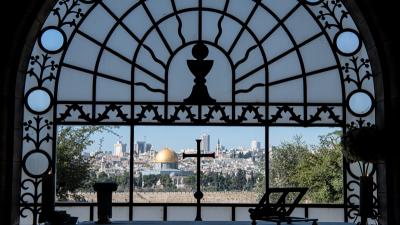
After ten months of restoration work, the small building that covers the GPS coordinates of Jesus’ tomb, often referred to as the Edicule, was cleared of the steel beams that had been laid on it by the British in 1947.
Last week, on the nights of February 22-25, workers from the Technical University of Athens removed the crutches from the building. They had been there since 1947, and they had been installed by the powers that be to support the construction that were risking falling into ruins.
For the occasion, the team led by Prof. Moropoulou brought a most sophisticated machine from Greece. The demonstration was done on Tuesday, February 21, in front of some television cameras; the machine was able to cut through the steel with a beam of light at an impressive speed. Perhaps due to the number of beams or to the strength of the Bengal steel, the machine was not able to finish the work, which was then finished in a traditional manner with a saw with greatly reinforced blades, which were quickly worn out by the beams.
Constructed in 1810, after the 1808 fire that had destroyed the previous structure, the building was damaged by a strong earthquake in 1927. The Churches at the time had not been able to come to an agreement on its restoration. So the British, within a few months of completing their mandate on Palestine, preferred to wrap the edifice in iron so as to avoid its collapsing on itself.
Seventy years later, and following the work begun in May 2016, after an agreement was reached between the Greek-Orthodox, Latin churches represented by the Franciscans of the Custody, and the Apostolic Armenian Church, the building underwent a structural restoration so that it could stay up.
Regular visitors have not yet gotten accustomed to a shrine that looks so bare. For the time being, the fences continue to hide this important change from the eyes of pilgrims and tourists. The teams on site have less than a month to finish the restoration. The building’s roof still needs the most work and the new ventilation system must still be completed. It also is necessary to carry out necessary cleanings after so much dust has been collecting throughout the basilica.
They only have less than a month to finish the work since an ecumenical celebration is scheduled for March 22 at 10 a.m.
It will be up to the churches to decide when they will schedule further interventions. Indeed, according to Prof. Moropoulou, all the work carried out should be perpetuated by removing the residual cause of the fragilization of the whole structure: the moisture of the floor surrounding the Edicule. This would be yet another phase of work which she claimed would require ten more months of work and an additional six million Euros.




